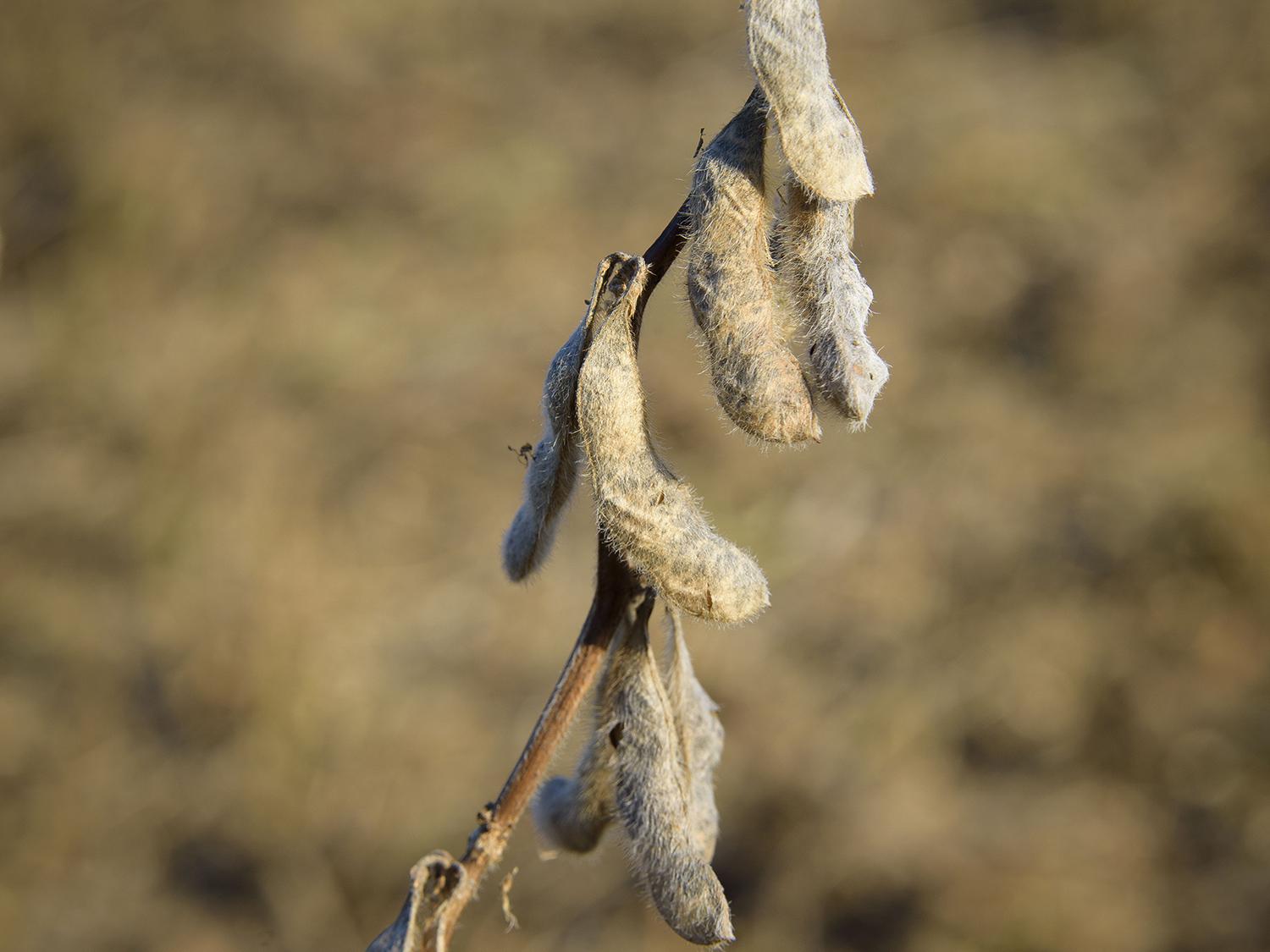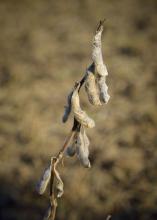Information Possibly Outdated
The information presented on this page was originally released on September 29, 2017. It may not be outdated, but please search our site for more current information. If you plan to quote or reference this information in a publication, please check with the Extension specialist or author before proceeding.
Rain delays likely hurt soybean crop
STARKVILLE, Miss. -- Official numbers show Mississippi’s soybean crop is ahead of schedule and in good shape, but many fields have actually spent a wet month waiting for harvest.
Trent Irby, Mississippi State University Extension Service soybean specialist, said this delay -- caused by frequent, heavy rains -- impacted a portion of the state’s crop.
“We have experienced sprouting and other seed quality issues as a result of the environmental conditions,” Irby said. “These issues are very unfortunate and can make a huge impact on our producers’ final yield.”
Growing conditions were good for soybeans through most of the season, but September rains caused by tropical weather changed some of that.
“Soybeans can tolerate some rain at harvest time without damage, but prolonged periods of rain and cloudy conditions are not good for a mature crop,” Irby said.
The U.S. Department of Agriculture estimated 27 percent of the crop was in excellent condition, 43 percent good and 24 percent fair as of Sept. 24. USDA estimated exactly half the crop had been harvested by that point.
“We had delays throughout the harvest window, but we’ve made some real strides in the last couple of weeks in getting more of the crop harvested,” Irby said.
The most recent USDA forecast indicates that the state’s soybean acres will yield an average close to the previous yield record of 52 bushels an acre set in 2014.
Redbanded stinkbugs presented a significant late-season threat and are still a concern in some areas. USDA estimates 70 percent of the crop is mature, leaving many fields still susceptible to this pest.
Angus Catchot, Extension entomologist, said the biggest threat from the redbanded stinkbug comes from its ability to damage soybean plants late in their reproductive stages.
“It is too early to tell what the final impact is, given we are still dealing with them,” Catchot said.
Brian Williams, Extension agricultural economist, said soybean prices are down from summertime highs near $10.25 a bushel.
“Markets have been steady for the last month, and Greenville soybeans are trading for $9.61 a bushel,” Williams said. “November soybean futures are trading for $9.65 a bushel.”
Harvest delays across the Southeast have not affected soybean markets, but Williams said any major delay in the Corn Belt would likely create a temporary bump in prices.
Growers can receive a discounted price when sold if the seed has low test weight caused by dry growing conditions or high moisture content caused by wet harvest conditions.
“I think the bigger worry than discounts at the elevator would be losing yield due to pods popping open and beans dropping onto the ground,” Williams said. “This can be caused by multiple exposures to rain and drying out, or to heavy rain and hail.”










